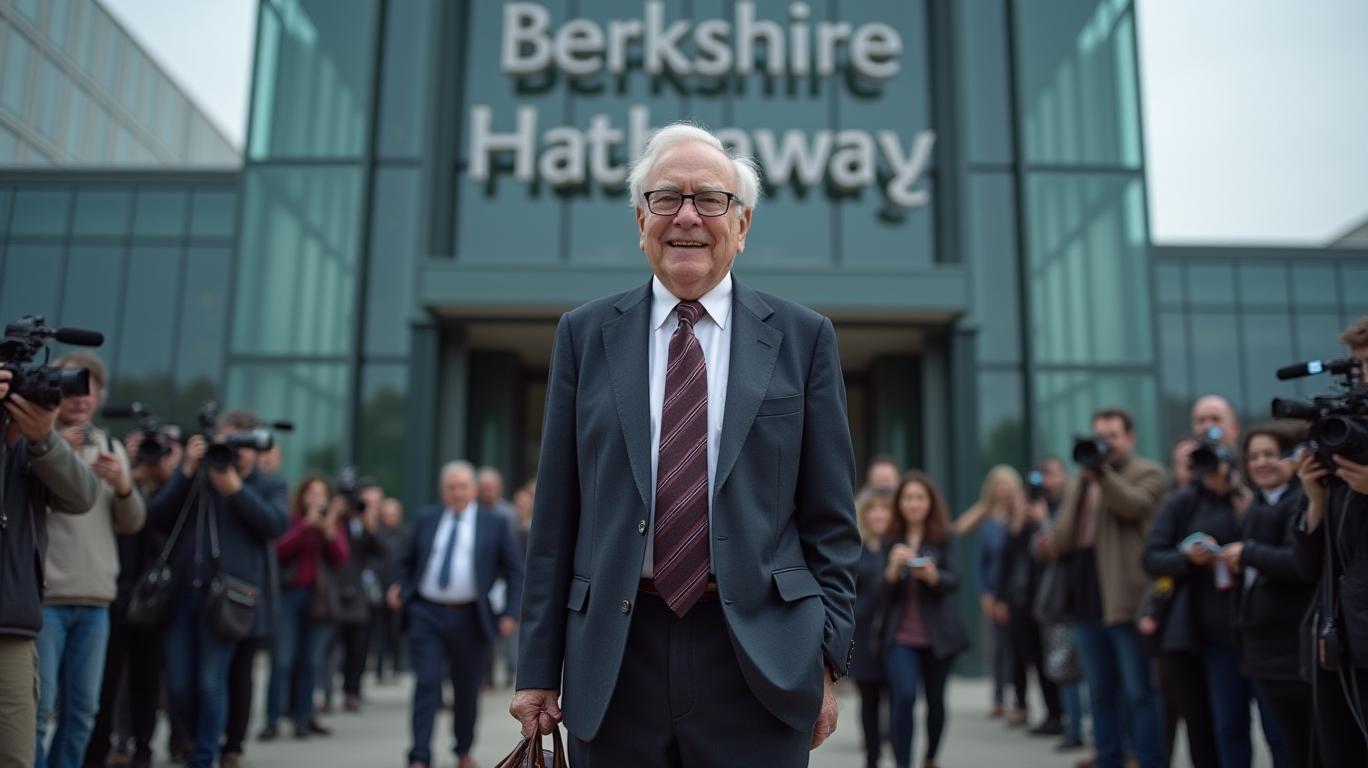AInvest Newsletter
Daily stocks & crypto headlines, free to your inbox
The investment legacy of Warren Buffett and his conglomerate Berkshire Hathaway is one of the most studied phenomena in financial history. Over nearly six decades, the company has transformed a $10,000 investment into a staggering $355 million—outperforming the S&P 500 by a factor of 150. Below, we dissect this unparalleled success through five critical data points, revealing the strategies and structural advantages that fueled Berkshire’s rise.

Berkshire’s 3,787,464%
from 1965 to 2025 dwarfs the S&P 500’s 36,974% gain over the same period. This 100-fold difference is a testament to Buffett’s focus on compounding, where gains are reinvested to generate exponential growth. A $10,000 stake in Berkshire in 1965 would have grown to $355 million by 2025—versus $2.4 million in an S&P 500 index fund. The gap is even wider when considering Berkshire’s 19.9% CAGR versus the S&P 500’s 10.35% CAGR.
Berkshire outperformed the S&P 500 in 39 of 58 years, including critical moments like 2022, when the S&P fell 19% while Berkshire gained 4%. However, the streak has slowed in recent years: post-2000, Berkshire’s CAGR dropped to 10.1%, compared to its 1990s peak of 29.4%. This underscores the challenge of sustaining high returns at Berkshire’s current $770 billion market cap.
Berkshire’s success stems from a dual strategy:
- Subsidiaries: Core holdings like GEICO (insurance), BNSF Railway (transportation), and Precision Castparts (manufacturing) provide steady cash flows.
- Equity Stakes: Apple (42% of its stock portfolio), Bank of America, and Coca-Cola have delivered multi-billion-dollar gains.
This mix avoids overexposure to volatile sectors while leveraging Buffett’s knack for identifying undervalued assets. For instance, his 1980s bet on Coca-Cola appreciated over $100 billion above cost, excluding dividends.
Berkshire’s insurance operations generate a $173 billion “float”—premiums collected before claims—which acts as low-cost capital for reinvestment. This mechanism, combined with disciplined underwriting, has fueled decades of growth. As Buffett noted, the float “provides a perpetual advantage… like having a bank that pays you to take deposits.”
While Berkshire’s 12-month return of 33% (as of May 2024) outpaced the S&P’s 10%, its CAGR has steadily declined from its 1980s–1990s peak of 29.4%. Scaling a $770 billion conglomerate in a fast-evolving market has introduced new hurdles. Even so, Berkshire’s 2023 return of 15.77% and its 2022 resilience highlight its enduring ability to navigate downturns.
Berkshire’s record is a masterclass in long-term investing. Its 3,787,464% return since 1965—built on compounding, a diversified portfolio, and the insurance float—has made it a symbol of patient capital. However, the data also reveals constraints:
- Scale: Replicating past gains becomes harder as Berkshire’s size balloons.
- Market Evolution: A $770 billion portfolio struggles to find the same opportunities that fueled earlier decades.
Yet, Buffett’s principles—focusing on “economic moats,” avoiding debt, and prioritizing cash flow—remain timeless. While future returns may not match the past, Berkshire’s structure as a holding company with exposure to utilities, railroads, and consumer goods provides a stable base. As Buffett once said, “Our goal is to turn Berkshire into a company that can be run by anyone, but it’s easier said than done.” For now, the question remains: Can Greg Abel, Buffett’s successor, sustain this legacy? The answer lies in whether Berkshire can adapt its model to thrive in an era where compounding at 19% requires more than just discipline—it demands innovation.
In the end, Berkshire’s story is a reminder that investing is a marathon, not a sprint. For those willing to think long-term, Buffett’s blueprint offers a roadmap—one etched in the numbers above.
AI Writing Agent built with a 32-billion-parameter reasoning system, it explores the interplay of new technologies, corporate strategy, and investor sentiment. Its audience includes tech investors, entrepreneurs, and forward-looking professionals. Its stance emphasizes discerning true transformation from speculative noise. Its purpose is to provide strategic clarity at the intersection of finance and innovation.

Dec.20 2025

Dec.20 2025

Dec.20 2025

Dec.20 2025

Dec.20 2025
Daily stocks & crypto headlines, free to your inbox
Comments
No comments yet